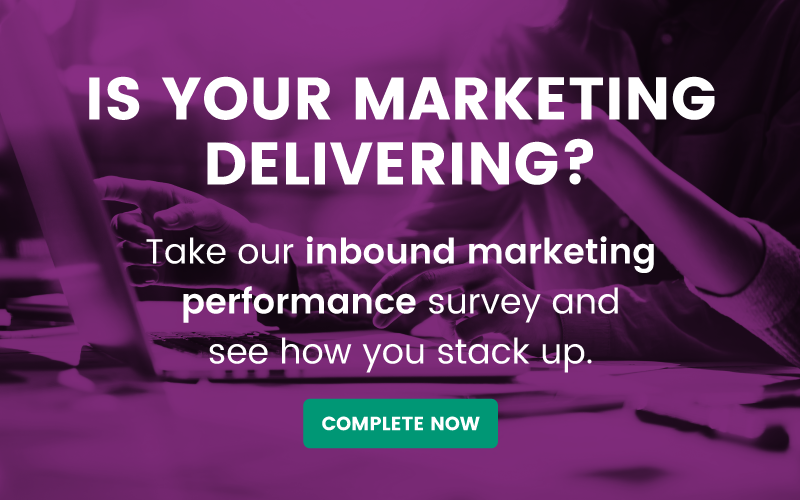They could be awareness (customer might stumble across you at a convention having not heard of you before), consideration (customer might be scouting out the convention for a solution to their problem, and come to speak to you about the solutions you offer) or decision (customer has interacted/been aware of you before and has specifically sought you out at this event to size you up before purchase).
It’s important to think about events not just as an addition to, but as an integral part of your inbound marketing funnels, and your prospects’ journey to become customers.
As my event experience is largely in B2B, this article examines the concept of events and inbound marketing largely through this lens. But it’s worth noting these points down for B2C too.
Here are the main points I think you should consider about how your events and inbound marketing fit together, and how to build an effective strategy.
What content are you offering at the event?
Event content doesn’t just have to be brochures, catalogues or flyers. Try not to think about content in a traditional sense like this when it comes to integrating events into your inbound funnels.
Can people book an appointment? Are you holding talks or seminars on your stand? Can people download electronic content on your stand? Consider what this content is, where it sits in the inbound funnel, and how you are going to blend the face-to-face interactions with marketing automation and other inbound techniques in order to drive people through effectively. If you’re giving people the opportunity to book appointments, use a tool like Calendly, which syncs up nicely with most automation systems like HubSpot and ActiveCampaign so that you can record appointment bookings. You can then use this information to nurture attendees if they do attend the appointment, and if they don’t, making sure they stay engaged with you and your brand after the event.
What about good old fashioned leads?
It’s tempting when exhibiting at an event – and in the aftermath – to see all leads equally. There’s a definite bliss to sitting back, counting the number of leads you recorded and giving yourself a big pat on the back. But deep down you know this isn’t the case. As mentioned in the intro, attendees will have a variety of different reasons for visiting you and your stand. This might be their first interaction with you, or their third, or their tenth. A person who has wandered onto your stand one day having never even heard of you before cannot be considered to be in the same stage of the buyer’s journey as someone who’d carefully researched you online before seeking you out at the event. This distinction needs to be accounted for in your lead capturing process.
A technique that’s worked well for me in the past is using an online form tool (like Typeform) to collect leads, and having salespeople and stand-manners manually score and assess each lead as they come. This doesn’t have to be a numerical score, it can be a simple process of selecting “This person wants a quote” or “This person wants information” from a drop-down. There’ll still be some manual processing required in terms of the lead detail, but it’s a quick and easy way to sort leads in terms of priority and “temperature”.
What about follow-up?
Closely related to my previous point, it can be so easy in the aftermath of an event to focus solely on how many you leads you got and reporting on success to the business rather than making sure they get solid follow-up. Sales teams can get over excited about the volume of leads they’re receiving and having a solid list of prospects to attack – but not all leads are created equally, and they don’t all require follow-up in the same way.
The process of “lead scoring” described above will you help distinguish whereabouts the lead is in the buyer’s journey, but another key part of this process is deciding exactly how you’re going to engage with your prospects and keep them warm, possibly even weeks after the event.
It’s a great idea to draw up funnels for your event well in advance, and put automations in place that will help nurture customers once they’ve skipped merrily away from your exhibition stand with freebies in hand. For example, if you were a company who sold office furniture, and you were exhibiting at a big office furniture conference, a funnel might look like this.
Always think carefully about how the lead would like to be contacted next, and don’t let them go cold. Thank them for coming, let them know you’ll be in touch about what you discussed. But don’t smother them. Many people bemoan being hassled by exhibitors after placing one toe on a stand at an exhibition. Think about what the prospect would like to hear from you next and how you can keep them interested and nurture them into a sale.
Don’t forget that events are a key part of your inbound strategy and a valuable tactic for getting in front of people and engaging with them in a meaningful way. But unfortunately, due to the nature of them, you only get one chance to get them right, at the risk of having to wait to have another go next year. It’s vital to carefully plan what inbound marketing will look like around your events, in order to make them a success within your wider marketing strategy.



